Can you interchange the positions of the battery in the auxiliary circuit and cell whose emf is to be determined in potentiometer circuit diagram?
The correct Answer is:cannot
Step by step video, text & image solution for Can you interchange the positions of the battery in the auxiliary circuit and cell whose emf is to be determined in potentiometer circuit diagram? by Physics experts to help you in doubts & scoring excellent marks in Class 12 exams.
Topper's Solved these Questions
- BOOK - PRADEEPCHAPTER - CURRENT ELECTRICITYEXERCISE - Jee (main and advance)4videos
CURRENT ELECTRICITY
- BOOK - PRADEEPCHAPTER - CURRENT ELECTRICITYEXERCISE - Interger Type2videos
CURRENT ELECTRICITY
- BOOK - PRADEEPCHAPTER - CURRENT ELECTRICITYEXERCISE - Value based2videos
CURRENT ELECTRICITY
- BOOK - PRADEEPCHAPTER - COMMUNICATION SYSTEMSEXERCISE - MODEL TEST PAPER-29videos
COMMUNICATION SYSTEMS
- BOOK - PRADEEPCHAPTER - DUAL NATURE OF RADIATION AND MATTEREXERCISE - Exercise191videos
DUAL NATURE OF RADIATION AND MATTER
Similar Questions
How will you campare emf of two cells by potentiometer?
View SolutionA capacitor of capacitance C which is initially charged up to a potential differnce ε is connected with a battery of emf ε such that the positive terminal of the battery is connected with the positive plate of the capacitor. Find the heat loss in the circuit the process of charging.
View Solution
Knowledge Check
- Question 1 - Select One or More
In the adjoining figure of a potentiometer arrangement, B is the main battery, C is the cell whose emf is to be determined, WW' is the potentiometer wire, G is the galvanometer and Jis the jockey which may touch any point on the wire WW'. Choose the correct alternativels for the potentiometer to work properly
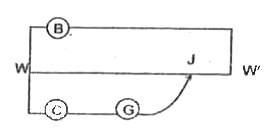 AThe emf of B must be greater than the emf CBTwo batteries B and C must be joined so that the same polarity terminals are joined togetherCThe positive terminals of two cells must be joined together to end W.DThe galvanometer resistance must be less than the resistance of potentiometer wire
AThe emf of B must be greater than the emf CBTwo batteries B and C must be joined so that the same polarity terminals are joined togetherCThe positive terminals of two cells must be joined together to end W.DThe galvanometer resistance must be less than the resistance of potentiometer wire - Question 2 - Select One or More
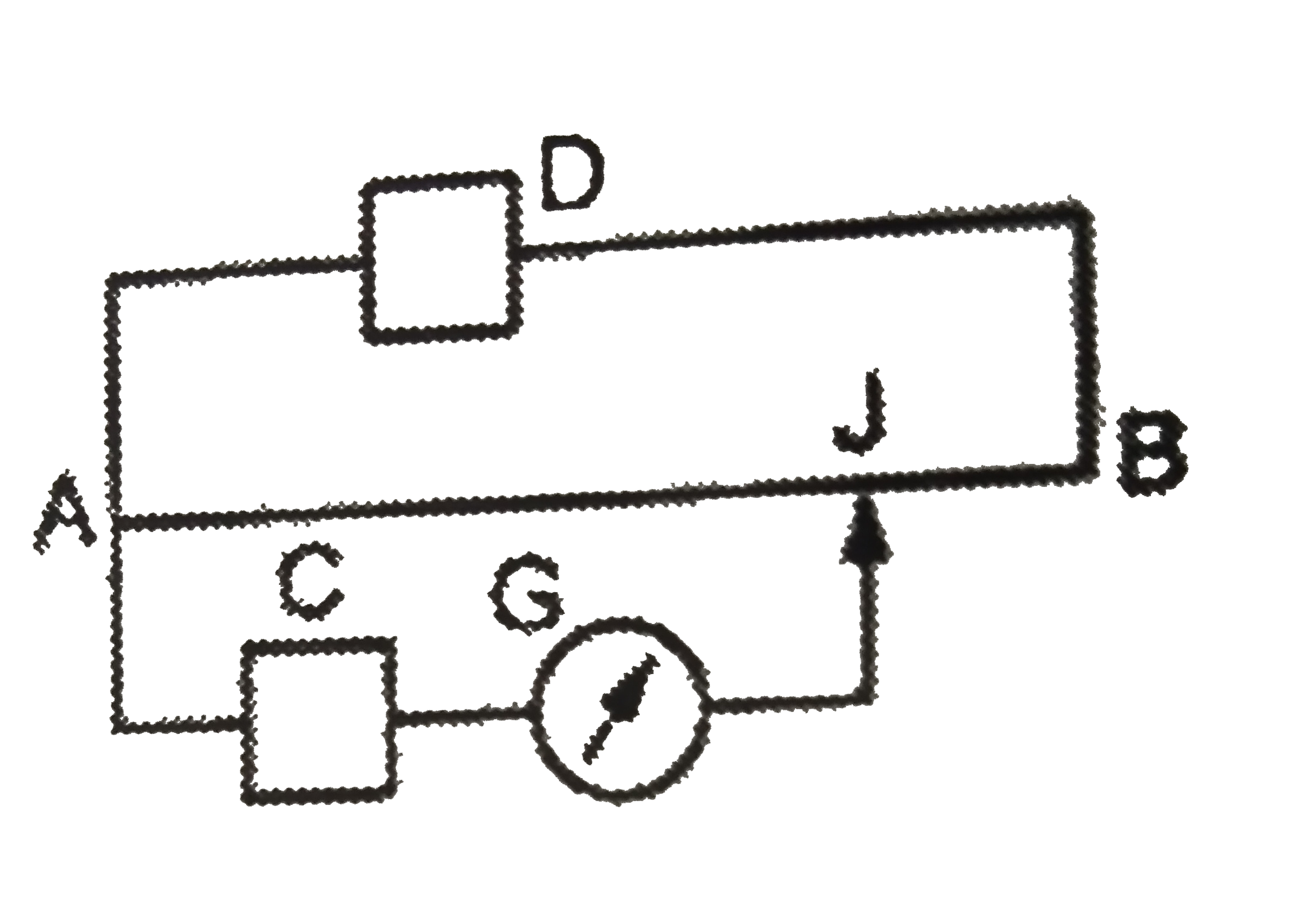
The figure shows a potentiometer arrangement. D is the driving cell. C is the cell whose emf is to be determined. AB is the potentiometer wire and G is a galvanometer. J is a sliding contact which can touch any point on AB. Which of the following are essential conditions for obtaining balance?AThe emf of D must be greater than the emf of CBEither the positive terminals of both D and C or the negative terminals of both D and C must be joined to A.CThe positive terminals of D and C must be joined to ADThe resitance of G must be less than te resistance of AB - Question 3 - Select One or More
The below figure shows a potentiometer arrangement, where B1 is the driving cell, B2 is the cell whose emf is to be determined. AB is the potentiometer wire and G is the galvanometer. J is a sliding contact which can touch any point on AB. Which of the following are essential conditions for obtaining balance?
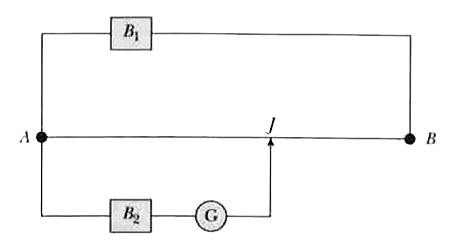 AThe emf of B1 must be greater than the emf of B2BEither the positive terminals of both B1andB2 or the negative terminals of both B1andB2 must be joined at ACThe positive terminals of B1andB2 must be joined to ADThe resistance of G must be less than the resistance of AB
AThe emf of B1 must be greater than the emf of B2BEither the positive terminals of both B1andB2 or the negative terminals of both B1andB2 must be joined at ACThe positive terminals of B1andB2 must be joined to ADThe resistance of G must be less than the resistance of AB
In the following diagram the deflection in the galvanometer in a potentiometer circuit is zero. Then:-
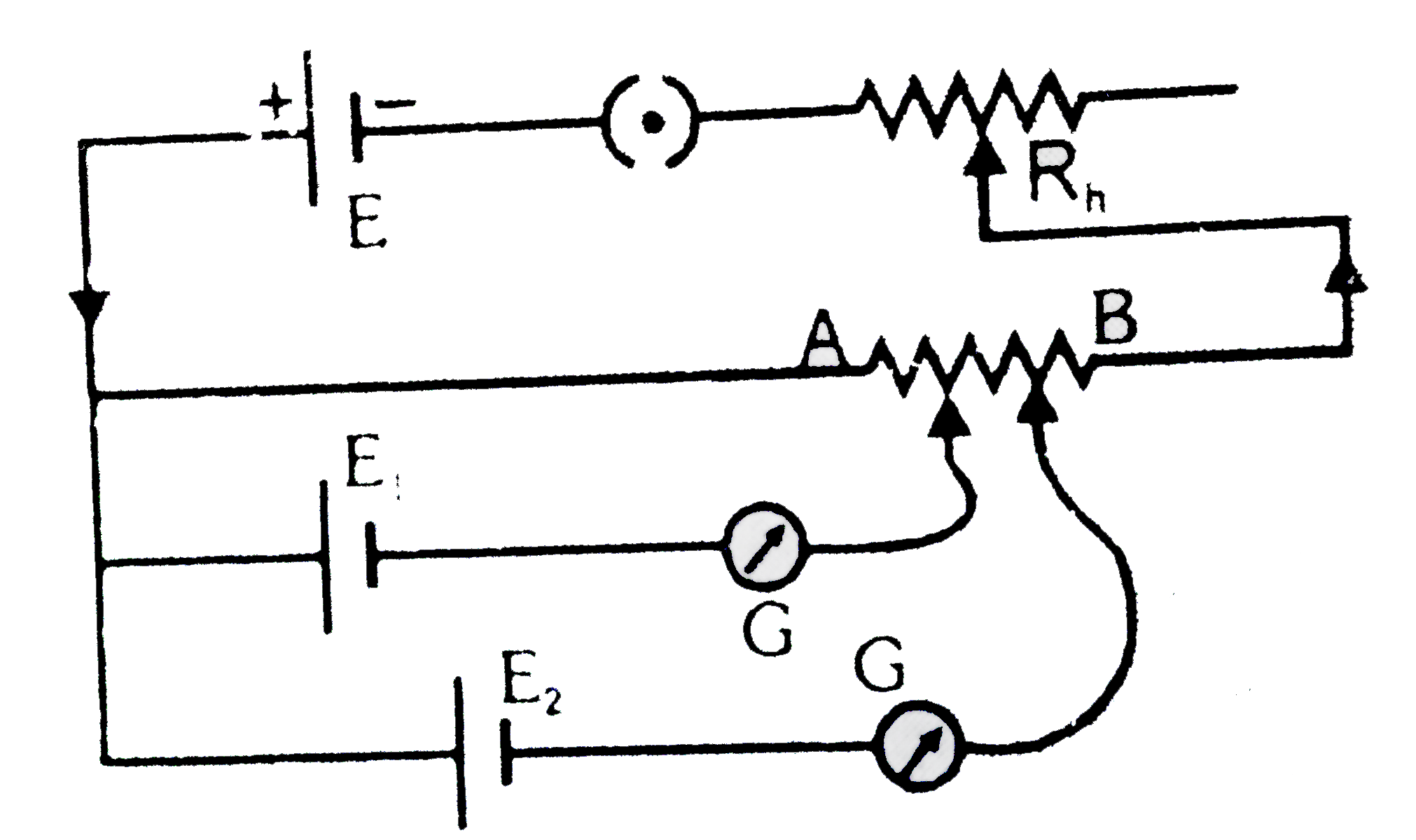 View Solution
View SolutionThe current from the battery in circuit diagram shown is
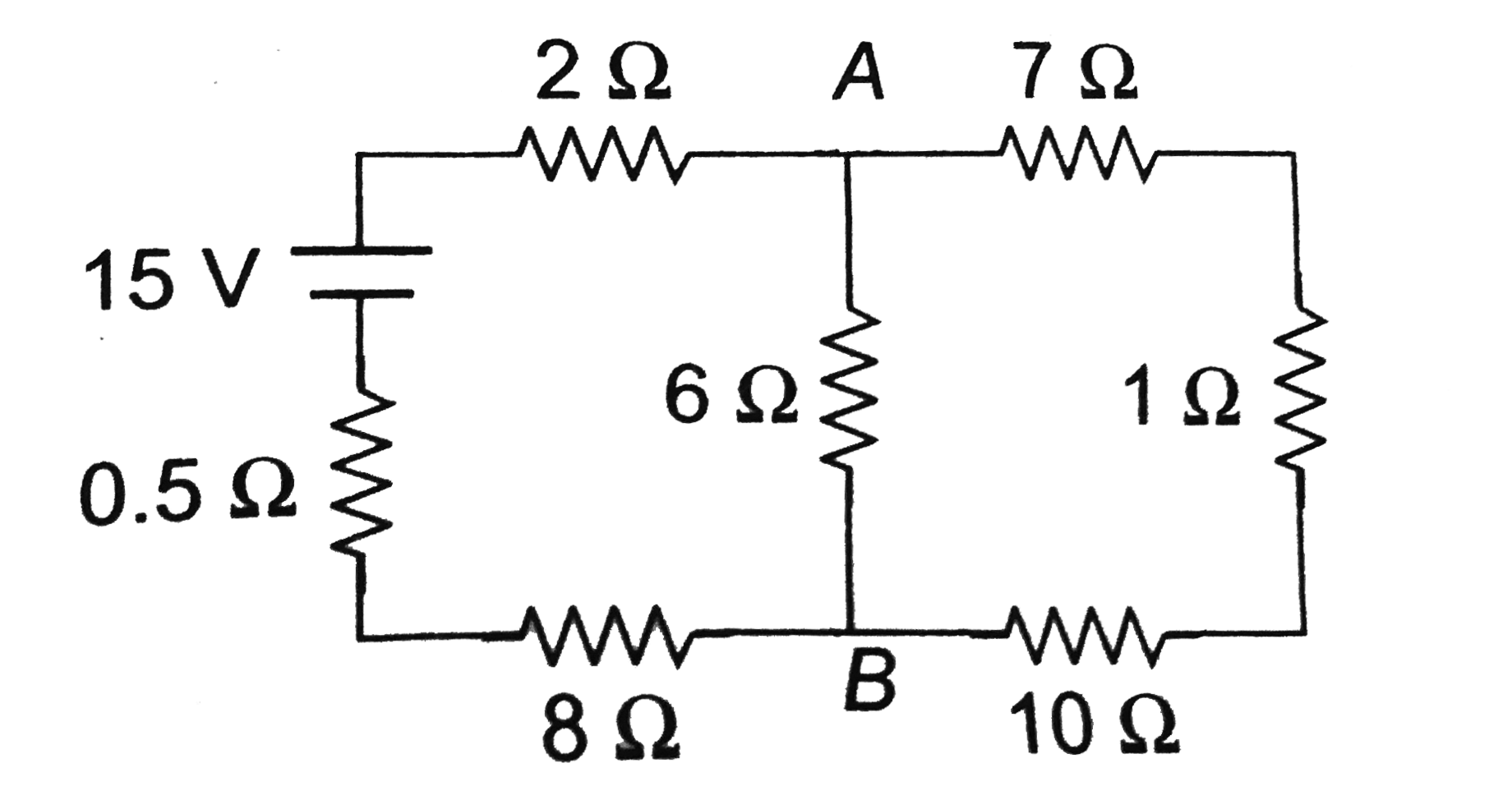 View Solution
View SolutionIf the positions of voltmeter and ammeter are interchanged in Ohm's law circuit, then
View SolutionFor a potentiometer to function, the emf of the cell (E) in the primary circuit compared to the emf of the cell (E1) in the secondary circuit should have a realtion
View SolutionFour student have made the following circuit diagrams for determining the equivalent resistance of two resistors connected in series :
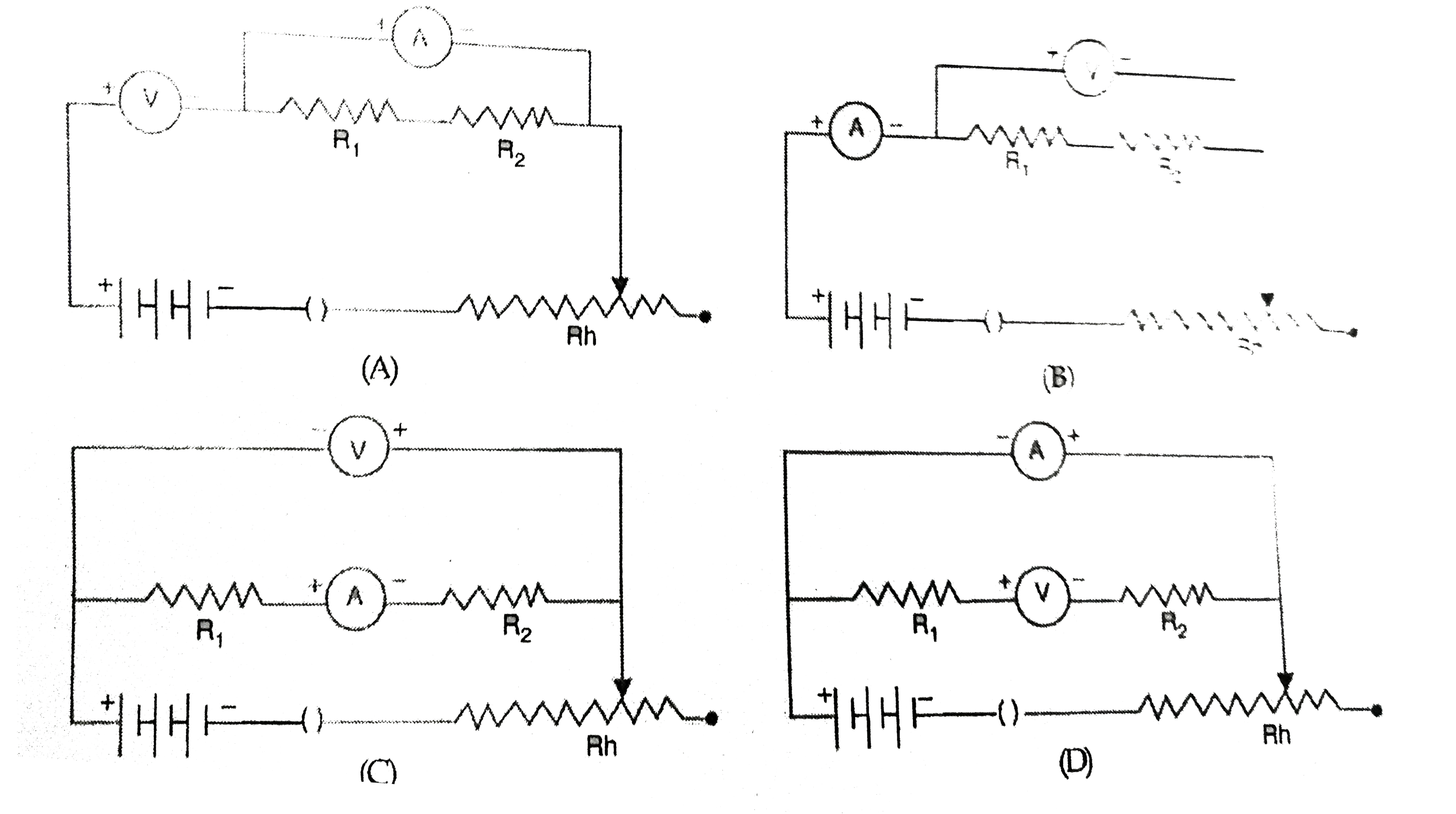
The correct circuit diagram is :View Solution

